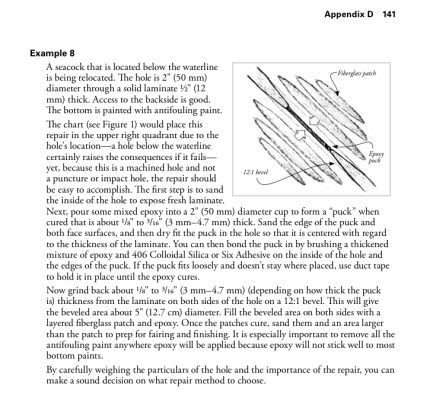This is a debated topic, so I bet Comodave did mean he puts the largest patch on first (closest to the hull). This is also the way WEST System shows it. Here is one rationale: As you sand or fair, you may sand a bit into the top fiberglass patch layer. If that is your largest piece, you may break the continuity of this, your best most continuous piece.
If the largest piece is up against the hull, it's going to say full thickness and full contact.
This seemed counterintuitive to me many years ago when I first started, so I did it the opposite way at first, with the smallest piece first, then larger as I went outward. Seemed to "match" the shape of my dished out area.
After reading more I changed to the way WEST and Comodave specify. I have not tested either way to failure, but I tend to agree with the aforementioned reasoning so I do it largest first, then work my way to smallest. If my fairing process cuts slightly into the top layer no biggie, as it's not the full sized one.
As far as bond, I have never seen the upper layers fall off, so I don't see that each layer needs to touch the hull (for a small rim area). Probably the layers bond to each other is stronger anyway, as it is a chemical bond. The bond to the hull is a mechanical one.
As I mentioned above, I have seen people do it both ways, so what I'm saying is not gospel. But also I'd say Comodave's way is not wrong.
Here is a page from the WEST Systems manual appendix, on closing out a machined hole (seacock):


